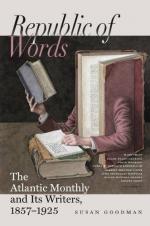THE GYMNASIUM.
Two distinct yet harmonious branches of study claimed the early attention of the youth of ancient Greece. Education was comprised in the two words, Music and Gymnastics. Plato includes it all under these divisions:—“That having reference to the body is gymnastics, but to the cultivation of the mind, music.”
Grammar was sometimes distinguished from the other branches classed under the term, Music; and comprehended, besides a knowledge of language, something of poetry, eloquence, and history. Music embraced all the arts and sciences over which the Muses presided.
Grammar, Music, and Gymnastics, then, comprised the whole curriculum of study which was prescribed to the Athenian boy. There were not separate and distinct learned professions, or faculties, to so great an extent as in modern times. The compass of knowledge was far less defined, and the studies and attainments of the individual more miscellaneous. Some of the arts rose to an unparalleled perfection. Architecture and sculpture attained an excellence which no subsequent civilization has reached. But the practical application of the sciences to daily use was almost entirely neglected; and inventions and mechanics languished until the far later uprising of the Saxon mind.
Yet the whole system of education among the Greeks was peculiarly calculated for the development of the powers of the mind and of the body in common. And it is from this point of view that we wish to consider it, and to show the nature and preeminence of gymnastics in their times as compared with our own.
Doubtless Grecian Art owed its superiority, in some degree, to the gymnasium. Living models of manliness, grace, and beauty were daily before the artist’s eye. The stadium furnished its fleet runners, nimble as the wing-footed Mercury,—fit types for his light and airy conceptions; while the arena of the athletes offered marvellous opportunities for the study of muscle and posture, to show its results in the burly limbs of Hercules or the starting sinews of Laocooen. Many of the most lifelike groups of marble which remain to us from that time are but copies of the living statues who wrestled or threw the quoit in the public gymnasium.
It is worthy of remark, in corroboration of this view, that the department of the fine arts which depended on outline surpassed that which derived its power from coloring and perspective. The sculptors far excelled the painters. The statue was the natural result of the imitative faculty surveying the nude human figure in every posture of activity or repose. Pictures came later, from more educated senses, and from minds which had first learned outward nature through the medium of the simpler arts.
The ancient gymnasium, apart from its baths and philosophic groves, was far from being, as with us, a mere appendage of the school. Modern instructors advertise, that, in addition to teachers of every tongue and art, “a gymnasium is attached” to their educational institutions. In old times, the gymnasium was the school,—the public games and festivals its “annual exhibitions.”




